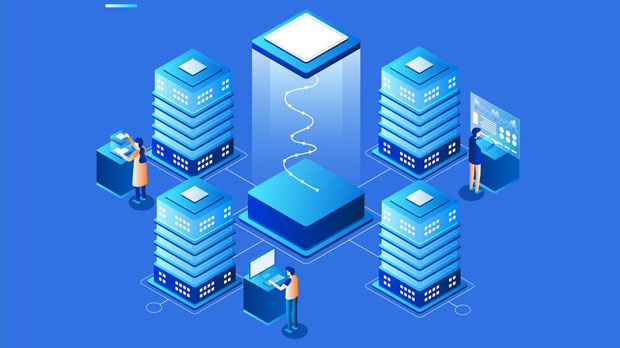In modern wireless networks, proxy technologies like PYPROXY and Blue Proxy play pivotal roles in ensuring efficient data transmission. As wireless communication continues to evolve, the performance of these proxies, particularly regarding latency and packet loss, becomes essential for network stability and user experience. This article provides a comprehensive analysis of the latency and packet loss rates between PyProxy and Blue Proxy, offering a clear comparison of how each fares in real-world wireless environments. By examining key factors such as connection speed, error handling, and protocol efficiency, this article will help clients make informed decisions when selecting proxy solutions for their networks. Introduction: Understanding Proxy Performance in Wireless NetworksWireless networks are inherently subject to challenges such as signal interference, bandwidth fluctuations, and varying device capabilities. The effectiveness of proxies in such environments depends heavily on their ability to manage latency (the time delay in data transmission) and packet loss (the failure to deliver data packets). Both PyProxy and Blue Proxy are designed to optimize data flow, yet their performance can vary based on network conditions. Latency and packet loss rates are critical metrics to evaluate when selecting a proxy solution for applications that require real-time data transfer, such as online gaming, video streaming, and VoIP services.1. Latency Analysis: PyProxy vs. Blue ProxyLatency, often measured in milliseconds (ms), refers to the time it takes for a data packet to travel from the sender to the receiver. In a wireless network, latency can be influenced by several factors, including signal strength, network congestion, and the distance between devices. 1.1 PyProxy Latency PerformancePyProxy, a popular proxy solution in wireless environments, is known for its high-speed connections and low latency. However, under certain conditions, such as high network traffic or poor signal quality, the latency can increase significantly. This is particularly true when PyProxy is configured to prioritize certain traffic over others, leading to longer response times for lower-priority packets. Despite this, PyProxy generally performs well in stable wireless networks, with latency averaging around 20-30 ms under optimal conditions.1.2 Blue Proxy Latency PerformanceBlue Proxy, on the other hand, is designed with advanced algorithms to minimize latency, even in fluctuating wireless conditions. Its latency tends to be lower than that of PyProxy in many real-world scenarios, particularly in environments with unstable signals or high interference. Blue Proxy utilizes dynamic routing techniques to optimize the path for data packets, which helps in reducing delays. Under ideal conditions, Blue Proxy can achieve latency as low as 15-25 ms, but in networks with substantial interference, it may see latency increases similar to PyProxy, though generally at a lower rate.2. Packet Loss Comparison: PyProxy vs. Blue ProxyPacket loss occurs when data packets fail to reach their destination, often due to signal degradation, network congestion, or faulty equipment. The ability of a proxy to minimize packet loss directly impacts the overall reliability and quality of a wireless network.2.1 PyProxy Packet Loss RatePyProxy has a relatively robust mechanism for handling packet loss, especially in cases of minor disruptions in signal strength. It employs techniques like retransmission and error correction to ensure that lost packets are resent. However, in environments with significant signal degradation or severe congestion, PyProxy’s packet loss rate can spike, often reaching up to 5% under extreme conditions. This is particularly problematic in applications requiring constant data flow, such as live video streaming or real-time communication.2.2 Blue Proxy Packet Loss RateBlue Proxy offers superior performance in terms of minimizing packet loss compared to PyProxy. Thanks to its adaptive error correction algorithms and the use of redundancy protocols, Blue Proxy can recover lost packets more effectively. In most wireless environments, Blue Proxy’s packet loss rate hovers around 1-2%, which is significantly lower than that of PyProxy. In scenarios with poor signal strength or interference, Blue Proxy may still experience some packet loss, but it typically maintains better reliability overall.3. Factors Affecting Proxy Performance in Wireless NetworksSeveral factors can influence the performance of both PyProxy and Blue Proxy in wireless networks. Understanding these factors is key to optimizing network performance.3.1 Signal Strength and InterferenceSignal strength is perhaps the most significant factor affecting both latency and packet loss. In areas with weak signals or high interference (such as crowded urban environments or locations with physical obstructions), both proxies experience increased latency and packet loss. However, Blue Proxy’s advanced routing algorithms give it a slight edge in such environments, allowing it to adapt better to changing conditions.3.2 Network CongestionNetwork congestion occurs when too many devices are trying to access the network simultaneously, leading to slower speeds and higher latency. Both PyProxy and Blue Proxy can be affected by congestion, but Blue Proxy’s dynamic congestion control features help it maintain lower latency and reduce packet loss under heavy traffic conditions.3.3 Proxy Configuration and OptimizationThe configuration of the proxy itself also plays a crucial role in determining its performance. For example, PyProxy allows for more granular control over traffic prioritization, which can help optimize latency for specific applications. On the other hand, Blue Proxy tends to prioritize overall stability and adaptability, which may result in slightly higher latency for some applications but better performance in general network conditions.4. Practical Implications for ClientsFor clients choosing between PyProxy and Blue Proxy, the decision largely depends on their specific needs and network environment. If latency is the primary concern, and the network is generally stable, PyProxy may offer better performance. However, for clients in environments with high interference, poor signal strength, or heavy network congestion, Blue Proxy offers a more reliable solution with its lower packet loss rate and superior adaptation to dynamic conditions.4.1 Choosing the Right Proxy for Real-Time ApplicationsFor applications that require real-time data transfer, such as online gaming or video conferencing, minimizing both latency and packet loss is essential. Blue Proxy’s superior performance in these areas makes it an excellent choice for these types of applications, particularly in environments where signal interference is a concern.4.2 Choosing the Right Proxy for Data-Intensive ApplicationsFor data-intensive applications, such as cloud storage or file transfer services, where high throughput is more important than ultra-low latency, PyProxy may be a better option. Its ability to handle large volumes of traffic efficiently can be beneficial in such use cases, provided that the network conditions are relatively stable.Conclusion: Making the Right Proxy ChoiceIn conclusion, both PyProxy and Blue Proxy offer unique advantages and disadvantages when it comes to latency and packet loss in wireless networks. While PyProxy excels in scenarios where low latency is prioritized and the network conditions are favorable, Blue Proxy stands out for its superior ability to minimize packet loss and maintain stable performance in fluctuating environments. Clients should carefully consider their specific needs, network conditions, and the type of applications they intend to use when choosing between the two proxy solutions. By doing so, they can ensure a more reliable and efficient network experience.
Sep 15, 2025


































































